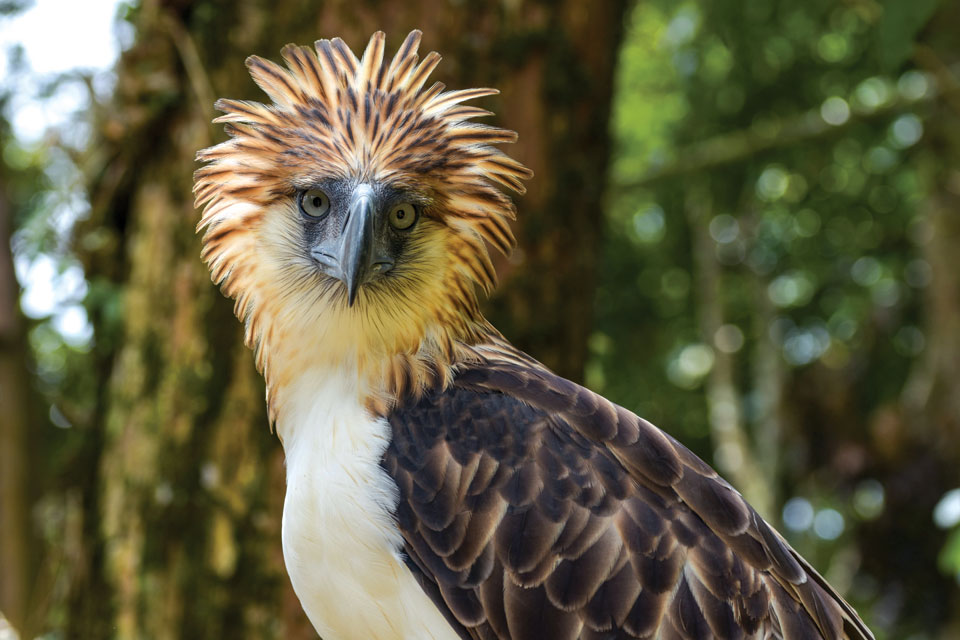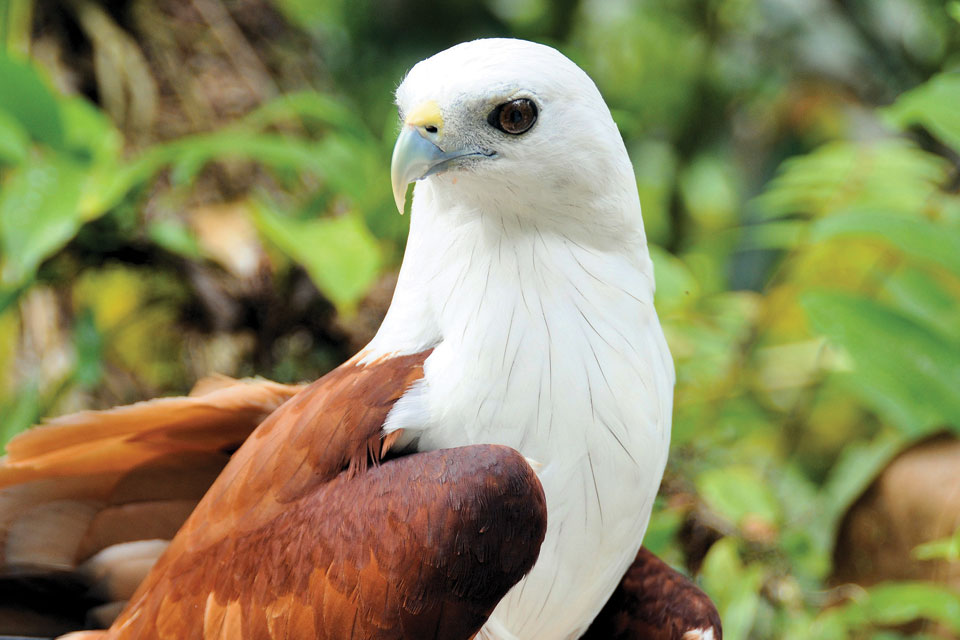
Philippine eagles are listed as critically endangered by the International Union for Conservation of Nature with an estimated number of between 250 to 270 left in the wild, although estimates vary and some say 400 pairs of Philippine eagles are left in the wild today.
Considered the largest eagle in the world in terms of length and wing surface, the giant Philippine eagle averages three feet from the tip of its crown feathers to its tail. The Philippine Eagle is a brown and white plumed eagle native to rain forests in the Philippines. Though regarded as the Philippines’ national bird, it is also one of the world’s most critically endangered and the killing of a Philippine eagle is currently punishable by 12 years’ jail time. The Philippine eagle is immensely powerful. Although earlier beliefs suggested that the Philippine eagle was also known as the monkey-eating eagle because it preyed on monkeys, contrary to popular belief the Philippine eagle does not eat monkeys. Due to the eagle’s unique agility, it is adept at snatching small mammals and other birds. The Philippine eagle is also known to prey on sizable domestic animals such as pigs, dogs and young goats.
The Philippine eagle is both larger than a golden eagle and adorned with a war-like headdress of spiky feathers which give the species a particularly fearsome appearance. A Philippine eagle’s distinct features are long crown feathers, massive arched beak, and two bluish eyes that are said to be really sharp. These birds have much clearer eyesight compared to humans and have the capacity to see eight times the distance that the human eye can see. The noises heard from a Philippine eagle are described as loud and high-pitched, suggesting its fierce and territorial characteristics.



They are monogamous and mate for life, unless one of the pair dies and the remaining eagle searches for a new mate to replace the one lost. The beginning of courtship is signaled by nest-building, and the eagle remaining near its nest. It only lays a single egg every two years. They have a long breeding cycle that lasts for two years, with the male and female sharing parental care for a total of 20 months. Because of the long dependency period of their offspring, Philippine eagles usually breed only once every two to three years. However, pairs that lose an egg or chick generally will try again the next year. Philippine eagles reach adulthood at 5-7 years of age.
An eagle’s average life span in the wild is only up to 30 years.
Indigenous to Philippine tropical forests and mountain environments, the Philippine eagle is perfectly adapted to life in dense foliage. A short but significantly broad wingspan allows the Philippine eagle to launch almost vertically in areas of dense trees and canopy.
Once found on nearly all of the Philippines’ significant islands, the Philippine eagle has been completely removed from many of these in recent years in the face of significant natural habitat loss. This being the case, the Philippine eagle presently only inhabits four islands in the Philippines, these being Luzon, Samar, Leyte and Mindanao.
Like birds of prey the world over, one of the chief threats to the Philippine eagle is hunting. Seen as a trophy bird for aspiring hunters, the Philippine eagle is also considered a blight to domestic animals. One of the most significant threats to the Philippine eagle is habitat loss. Nearly 80% of the Philippines’ tropical rain forest has been deforested since the 1970’s in order to make way for urban and agricultural development. This being the case, and with Philippine eagles requiring a significant size habitat just to raise a single chick successfully, it is unlikely it will be able to endure much further habitat loss or rebuild significantly from its current population.

